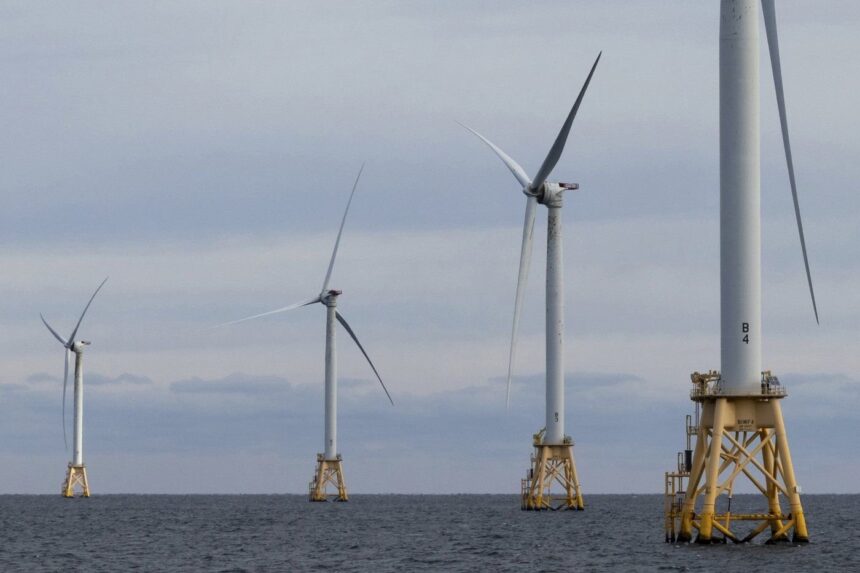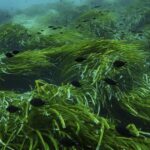The tide was just starting to rise when I stepped onto the rocky shoreline of Digby Neck last week. A biting wind whipped across the Bay of Fundy, carrying the distinct scent of salt and seaweed that defines Nova Scotia’s coastline. Behind me stood Ellen Moore, a fourth-generation fisher whose family has harvested these waters since before Confederation.
“Look out there,” she said, pointing toward the horizon where the province hopes to install hundreds of offshore wind turbines by 2035. “That’s our livelihood, our history. But maybe it’s our future too.”
After months of consultation and environmental assessment, Nova Scotia’s “Wind West” offshore energy initiative received conditional approval from federal regulators yesterday, marking a pivotal moment in Atlantic Canada’s renewable energy transition. The ambitious plan aims to generate 5 gigawatts of clean electricity from the Bay of Fundy and surrounding waters—enough to power nearly 2 million homes.
For Moore and many coastal residents, the approval brings mixed emotions. “We need clean energy, that’s not in question,” she told me as we watched lobster boats returning with their catch. “But these waters feed our families. We need guarantees they’ll still be here for our grandchildren.”
The federal approval comes with substantial conditions. According to Environment and Climate Change Canada, developers must implement a comprehensive marine ecosystem monitoring program, restrict construction during sensitive migration periods for endangered North Atlantic right whales, and establish a $75 million compensation fund for potentially affected fishing communities.
The approval represents what many see as a carefully balanced approach to meeting climate goals while respecting traditional industries. Premier Tim Houston called it “a responsible path forward” during yesterday’s press conference in Halifax, while emphasizing that implementation will proceed cautiously.
“We’re not rushing into this,” Houston said. “Getting it right means listening to coastal communities every step of the way.”
For Dr. Maryam Williams, marine ecologist at Dalhousie University who advised on the environmental assessment, the conditions attached to the approval reflect growing sophistication in how we approach energy transitions.
“Ten years ago, we might have seen a more binary approach—either full speed ahead or complete rejection,” Williams explained when I spoke with her at her Halifax office. “Today’s decision acknowledges the complexity. We need renewable energy urgently, but not at any cost to marine ecosystems.”
Williams points to specific protections for sea bird nesting sites and requirements for continuous underwater noise monitoring as evidence of this nuanced approach. Her research team has documented how poorly planned offshore wind developments elsewhere have disrupted marine mammal communication and migration patterns.
What makes Nova Scotia’s offshore wind potential particularly valuable is the consistent wind speeds in the Bay of Fundy, among the highest in North America. According to data from the Canadian Renewable Energy Association, the area could provide more reliable power generation than many land-based alternatives, with capacity factors exceeding 50 percent—significantly higher than typical onshore wind farms.
The proposal has found unexpected allies in some Indigenous communities. Sarah Googoo, energy coordinator for the Mi’kmaq Rights Initiative, sees potential alignment between renewable energy and traditional values.
“Our communities have always lived with the understanding that what we take, we must give back,” Googoo told me when we met at a community consultation in Yarmouth last month. “Properly done, this project could represent that principle—harvesting wind while protecting the waters that have sustained us for thousands of years.”
Not everyone shares this optimism. Walking the Digby wharf, I met James Thurber, who has operated tour boats in the Bay of Fundy for three decades. His business depends on the bay’s remarkable biodiversity, including the highest tides in the world and regular whale sightings.
“They’re telling us these turbines won’t affect marine life, but nobody really knows,” Thurber said, his weathered face creased with concern. “We’re talking about industrial development in one of the most dynamic marine environments on the planet.”
This tension—between urgent climate action and protecting existing natural systems and livelihoods—runs through every conversation about the Wind West project. Federal approval documents acknowledge these trade-offs explicitly, noting that while some localized disruption to marine habitats is inevitable, the long-term climate benefits outweigh these impacts if properly managed.
The economics also appear increasingly favorable. The latest cost analysis from Clean Energy Canada indicates that electricity from offshore wind has fallen by nearly 70 percent over the past decade, making it competitive with natural gas generation when environmental costs are factored in.
Provincial officials estimate the project could create up to 3,500 jobs during construction and 600 permanent positions for maintenance and operations. For communities like Digby and Yarmouth that have weathered downturns in traditional fishing industries, this economic diversification offers potential stability.
Back on the shore with Ellen Moore, watching the afternoon light play across the water, I asked what would make this project successful in her eyes.
“Respect,” she said without hesitation. “Respect for these waters, for our knowledge as people who’ve worked them for generations, and for the fact that we all want the same thing—a future where our grandkids can make a living here without watching the world burn around them.”
As the sun began to set, turning the bay a brilliant orange, Moore added: “We don’t have to choose between saving the planet and saving our way of life. But getting that balance right—that’s the hard part.”
Nova Scotia’s Wind West project now enters a detailed design phase, with construction potentially beginning as early as 2026. The conditional approval requires developers to submit comprehensive environmental management plans within six months and establish community liaison committees in affected coastal areas.
Whether this represents a model for how Canada navigates the complex waters of energy transition remains to be seen. But standing on that rocky shore, watching fishing boats return as they have for centuries while the wind—soon to power thousands of homes—blew steadily offshore, I couldn’t help feeling that something important was taking shape on Nova Scotia’s horizon.






